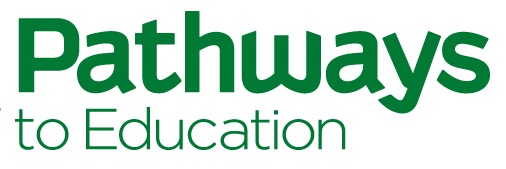Do you remember starting high school? Did you find it challenging? Intense? Stressful? If so, you are not alone. Research shows that the transition to high school is a particularly important time in young people’s lives. This is even more so the case when students have additional barriers to deal with.
For many students, the transition to high school is also the start of the Pathways Program. That’s why our research-based model prioritizes the flexibility needed to tailor programming to meet individual needs. It means that your donation to Pathways provides students living in low-income communities with the research-backed supports they need to succeed in this time of change.
The top 4 things we know about how to help young people starting high school:
| 1. The beginning of high school is a big deal
Studies show that the transition to high school is the discovery of a more complex environment. Through this single transition, students learn to deal with increased autonomy, and new social and academic pressures. According to the evidence, it’s crucial to make sure students have the supports they need during this time. That’s because negative experiences at the beginning of high school can shape a young person’s trajectory—particularly when they are in contexts of disadvantage, like living in a low-income community. For example, young people can lose confidence or develop bad habits that will hinder their long-term academic success.
|
| 2. Supportive adults make a big difference
A student’s transition to high school looks different based on how much their parents or caregivers can support them through academic and social issues. Likewise, parents or caregivers who are formally educated provide valuable supports to their children as they adjust to the increased academic demands of high school. But not all students have access to this kind of help. To level the playing field, a strong support system can make the difference. For example, helping students feel connected, supported, and giving them a sense of belonging can lead to many positive outcomes. Evidence shows that students with these supports are better able to deal with negative emotional outcomes, issues around self-esteem, and social adjustment. According to research, the best way to implement a support system for youth starting high school is through a team of adults each playing different roles. For example, youth in the Pathways Programs encounter teachers, program staff, and volunteers. On top of that, they can access a wide range of other resources through referrals from Pathways staff.
|
| 3. Mentorship is a powerful tool
Research shows that high school can be stressful and disorienting. That’s because, as we mentioned above, the transition to high school involves several new demands and challenges. One evidence-based strategy to help students navigate this change is mentorship. Through a relationship with a mentor, students get a mix of structure and empathy that can help guide them through change. Mentors can act as a reliable point of contact for the student, regardless of their situation at home. But they’re also able to relate to the student’s experience, advocate for them in the school system, provide different perspectives on issues, and help build their confidence. All that sets up a productive environment for the mentor to positively set high expectations of the student, commonly referred to as a culture of high expectations. Mentorship is a key aspect of the one-on-one supports provided to students as part of the Pathways Program. Through these relationships, Pathways students learn to set goals, develop accountability, and plan for the future.
|
| 4. There’s no “one-size-fits-all”
As we have seen, the transition to high school looks different for students depending on the availability and education level of their parents. But even within these broad categories, students continue to experience this next stage differently. For example, academic and social concerns vary amongst students. In fact, research shows that a “one-size-fits-all” approach to supporting students through their high school transition is not enough. What is needed are distinct supports and resources based on the individual student’s needs. The Pathways Program includes regular check-ins with students as they begin high school. These check-ins cover the different parts of a student’s life—such as academic, social and financial aspects—to make sure that they are adequately supported. This promotes the student’s long-term success in high school and ensures that someone is there to listen to them regardless of their resources.
|
Investing in supports for young people entering high school isn’t just about grade 9. It’s about providing them with the tools they need to develop habits, competencies, and relationships that will have a lasting impact on their trajectory. As students form their identity by navigating different environments and social relationships, face increasing academic demands, and make decisions about their future, their needs continue to change and evolve.
Being there for young people starting high school is important for all students, but students with fewer resources at home benefit from this support the most from it. With these support strategies at the heart of the Pathways Program, young people are set up for success from the very start of high school and are given the same chances as other students living in different circumstances. That’s creating a better future for Canada, and it’s what your support makes possible every day.
—
Graduation is the key to a more equitable economy, a healthier population, and a better future for all Canadians.
